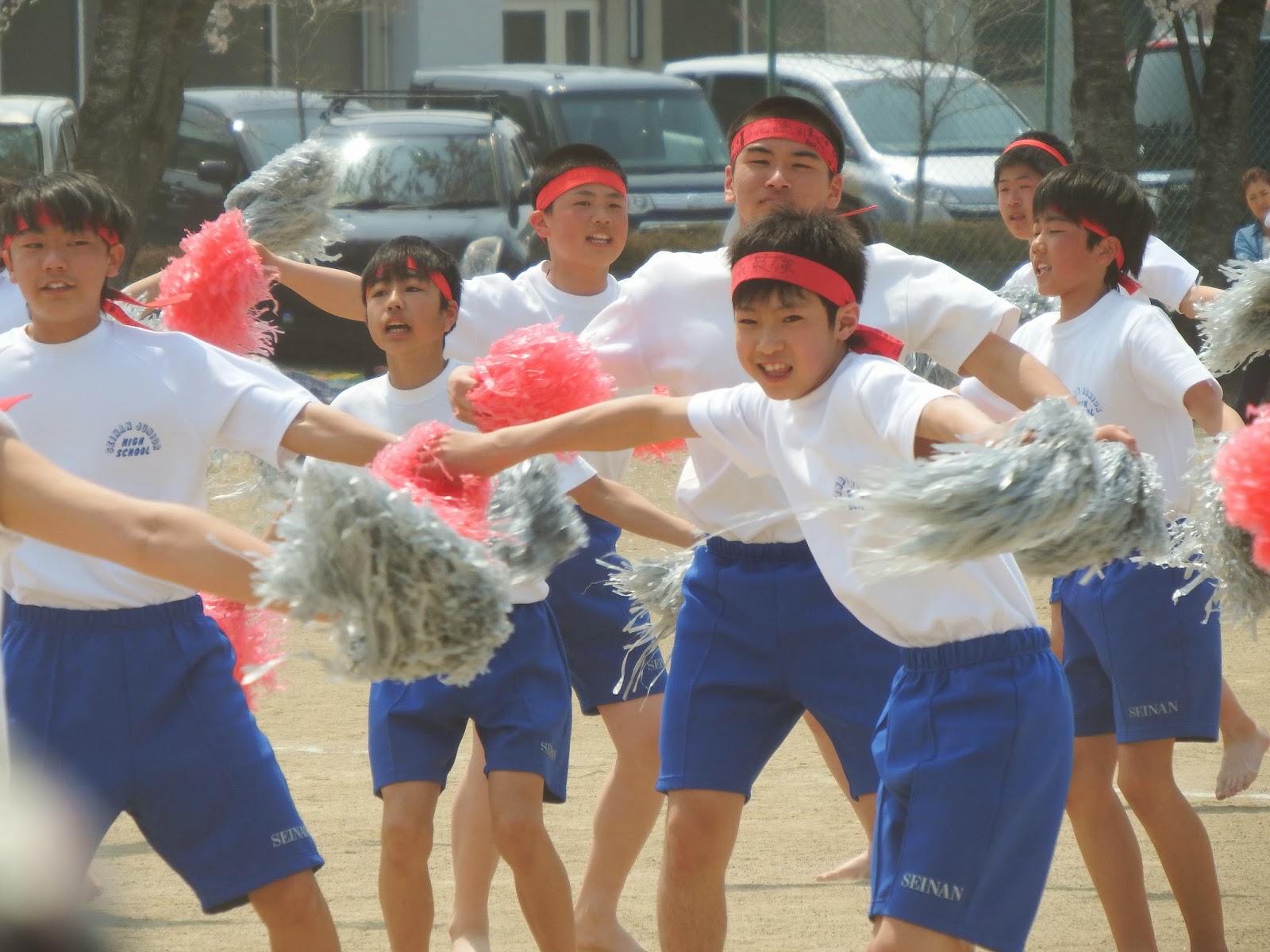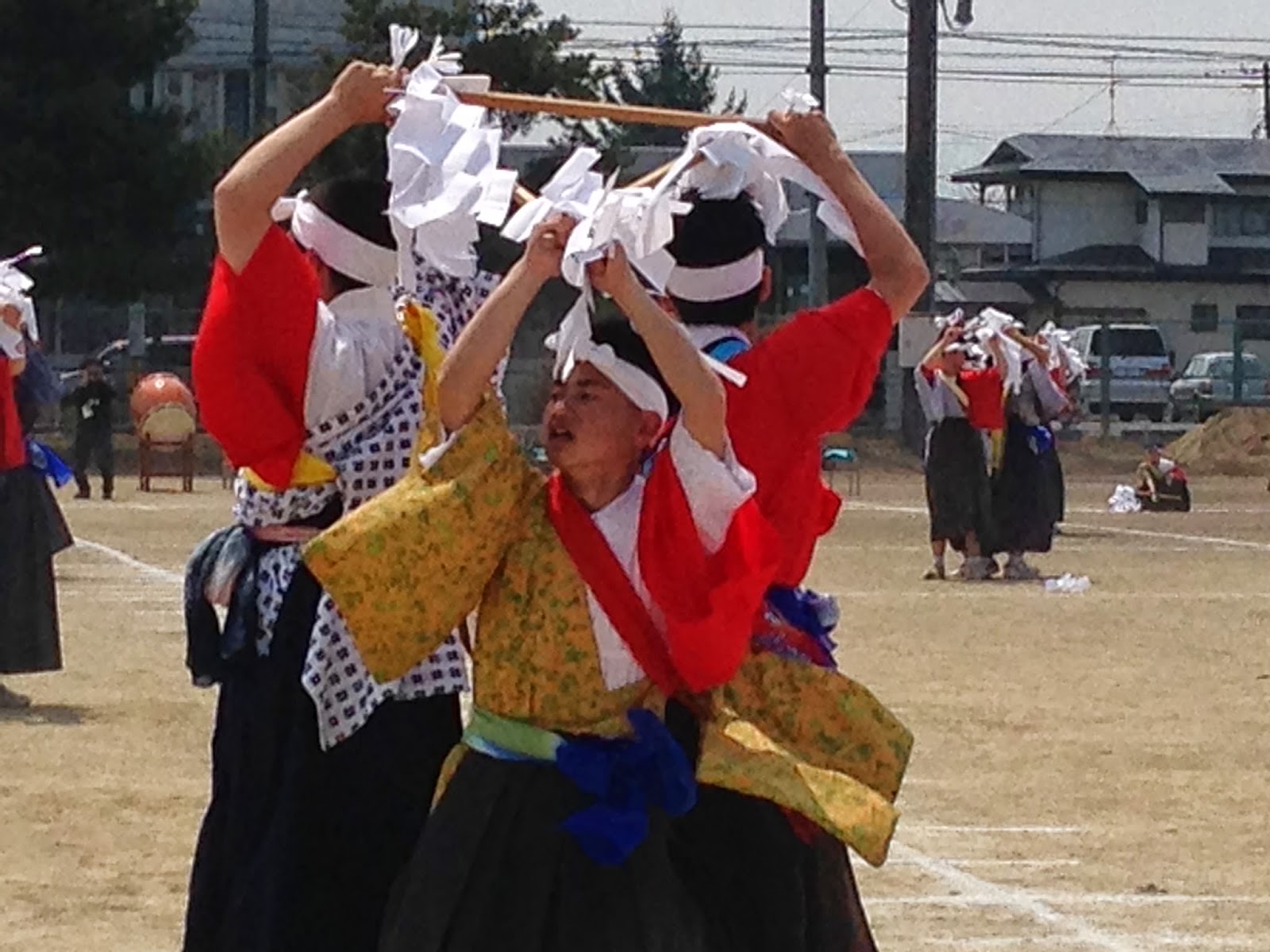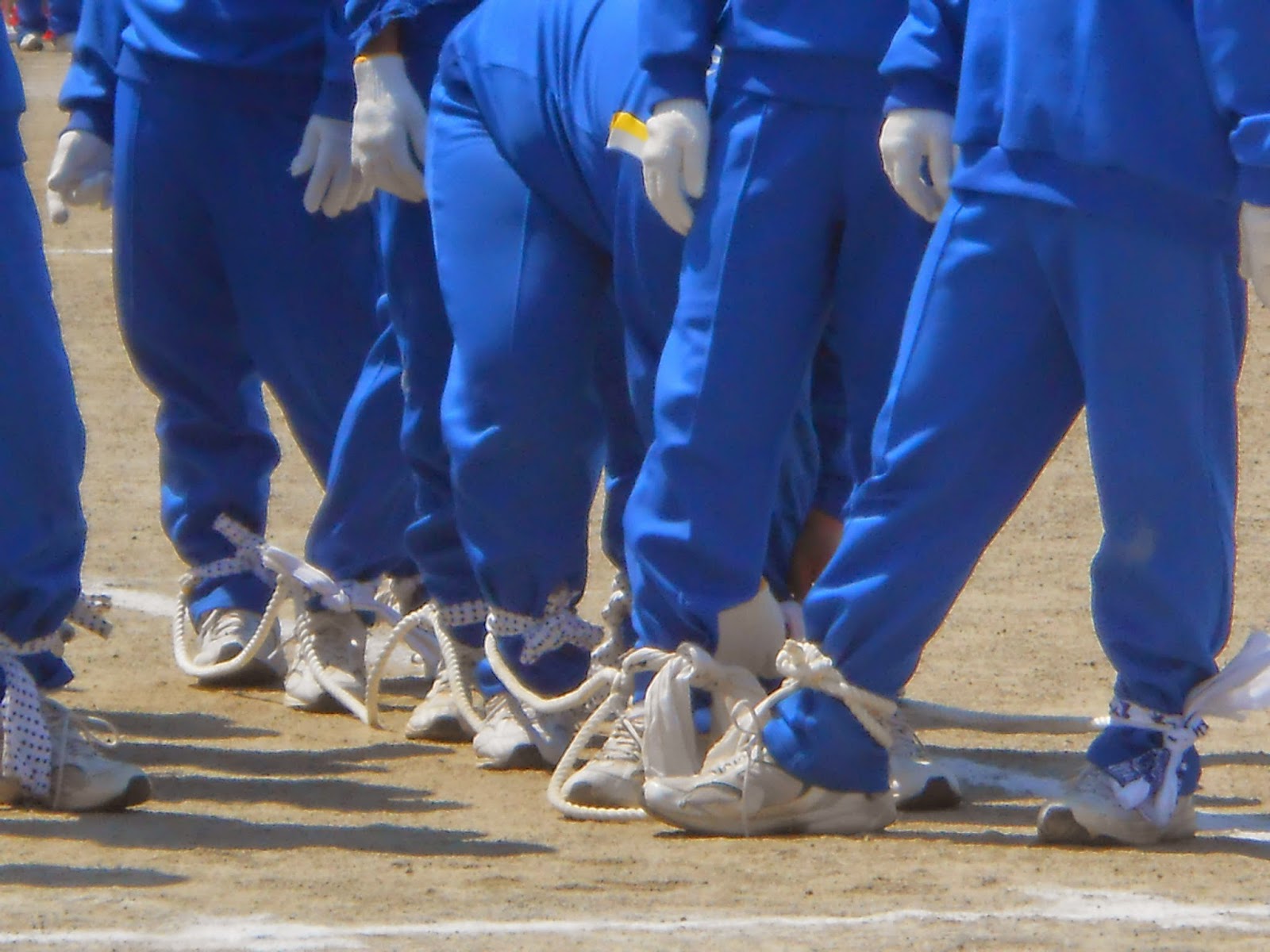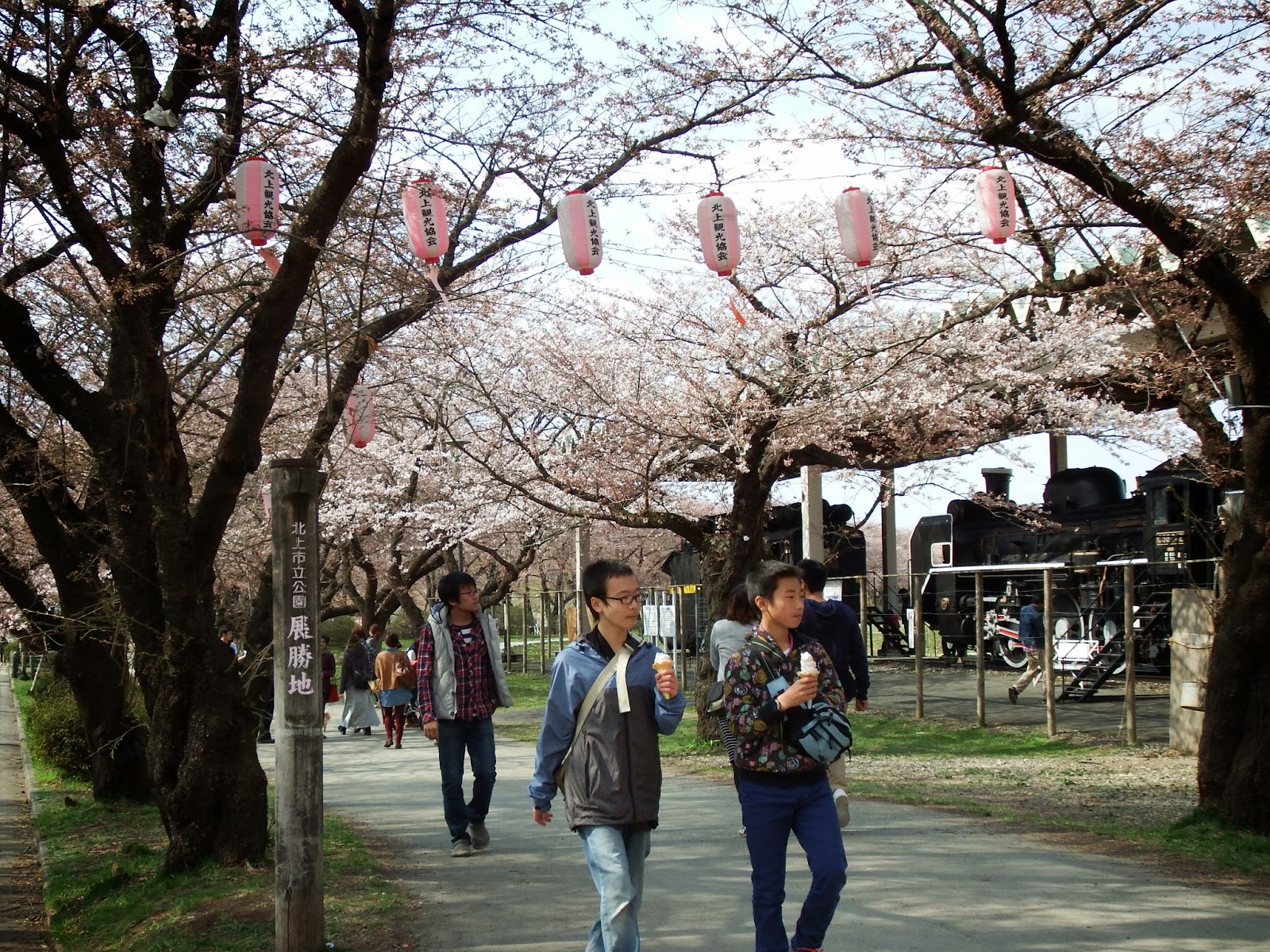My first week back to classes is behind me and I've nestled into my sofa nook with a glass of wine and some milk flavored sanbei. Let's do this.
Here's the deal: I'm no longer teaching in Kitakami. Their board of education can't afford a private contract anymore so they bade me a fond farewell. Now, it's all about Hanamaki. Last week, I met with a supervisor from the Morioka branch office and we did the rounds. This means we first went to the Hanamaki Board of Education in Ishidoriya City and said hello. My supervisor--a very cheerful and polite man with a permanent smile on his face and a sharp waist-low bow at the ready--introduced everyone and explained the terms of my contract. After that, it was off to the schools. They are as follows:
Doing an encore are な中学校 and や中学校, "Na" and "Ya" for those still getting the hang of Hiragana. There's been moderate turn-over of teachers at both schools (whether you've been there for one year or five, you're expected to pick up and go wherever the BOE sends you...principals and vice principals even more frequently!) So I went back to see who was new and who would be my superior. In both cases, that much hasn't changed. At な, it's still Ms. Forest, who vaguely reminds me of the actress who played Mother in "Memoirs of a Geisha." (The book will always be better, but I'll just fan-girl for a second and say "The artistry! The Watanabe! Squeee!") She's smart, strict and still motherly. We have a great rapport.
At や, same again. But this time, I'm determined to see things run a little more smoothly. We have that rocky first year behind us, he knows how I like to work, that I prefer to wait until the students are ready to get me for lunch rather than barge into the class, and that as long as I get a schedule before 11pm, I'm easy-going and glad to do whatever I'm asked. Just earlier today, my first day back at my desk, he said he was glad to see me and I look "well." We'll take that as a good start.
The same groundskeeper who always makes sure I have a fresh coffee and loaded me up on gourd, tomatoes and eggplant last year is also still there. Fingers crossed!
Then we went off to the new schools. From entirely superficial impressions, they are like black sesames and white.
せい is brand freaking new, maybe just a year old. The school still has the crisp, clean white walls and that new shoe locker smell. Everything has a patina of newness to it from the trophy case in the front hall to the guest shoes on the rack by the door: not a single scuff. And it's a big building, too! The teacher's room and main hallway are bright and airy with plenty of windows to let in the sunlight. The head English teacher was a kind woman with very good English who asked that I simply prepare a short introduction and worksheet with "difficult words and long sentences." Looks like these kids are up to the challenge!
ゆ is much smaller and much farther off the beaten path...which suits the area. The character for "yu" in this case indicates it's proximity to plenty of onsen. I know what I'll be doing on my Fridays after school! To give you a sense of how small the school is, each grade has only one
kumi or class. Roughly, that's about 100 kids in the school. I didn't get a chance to see much of the building, but the vice principal assured me that they look at themselves (kids included) like "one happy family." This too bodes well. They even invited me to their Sports Day on the 26th and asked specifically that I wear "appropriate clothes." Words cannot tell how excited I am to maybe participate...and not wear a suit jacket!
So my first week back has consisted of visiting only な and や so far. And because the second and third graders already know me, there wasn't the official welcoming ceremony and pomp from last year. Instead, I launched right into it alongside the teachers. Still, I keep my "Bag-O-Merica" tucked under my desk in case a lesson calls for big laminated pictures of Americana or some silk flowers.
My first day back at な, I had the opportunity to watch a new kind of ceremony, specifically created by the teachers at the school and certain traffic safety police. Ms. Forest explained that I was going to see a "Daruma Giving Ceremony." The tradition goes like this: Every year, the students and some traffic officers gather in the school at the beginning of the year. On the stage, the officers sit in a row behind a desk with two daruma on it. One daruma has one black eye, the other stares blindly. The students listen to a lecture about bike safety and are encouraged by the police to watch signals, wear a helmet and always use the utmost caution or face penalties: First, a warning, then one week without using the bike and finally, no bike for the rest of the year. If the students can obey the laws for a year without any serious accidents, at the next ceremony, they will paint in the second eye of the previous year's daruma to show the achievement.

Ms. Forest told me that they were close to not reaching their goal last year. A boy recklessly ran into a man on the crosswalk and hurt the man's ankle. It just so happens the man was the husband of the woman who brings the school lunch every day. She convinced her husband to give the boy a good scolding and forget it. Greasing the wheels happens everywhere...even in Japan!
At the end of the speech, a girl from the student government walked onstage, picked up a brush and dipped it in ink, then painted in the second eye on the first daruma. The previous year was a success! Clap clap clap! Then, an officer painted the first eye of the new daruma. Clap clap clap. And so the ceremony ended.
Of course, the very next day during the teacher's meeting, one teacher explained that already a boy had been caught not wearing his helmet for the second time! He'll hoof it to school for a few days and hopefully learn his lesson with every footstep or be banned from bike use all year. Shape up, kid!
So my first week is concluded. I think I'll celebrate with some hanami this weekend. Tenshochi should be looking nice right about now...
 |
| Also, I'm famous! This was in the Hanamaki City newsletter |



























































